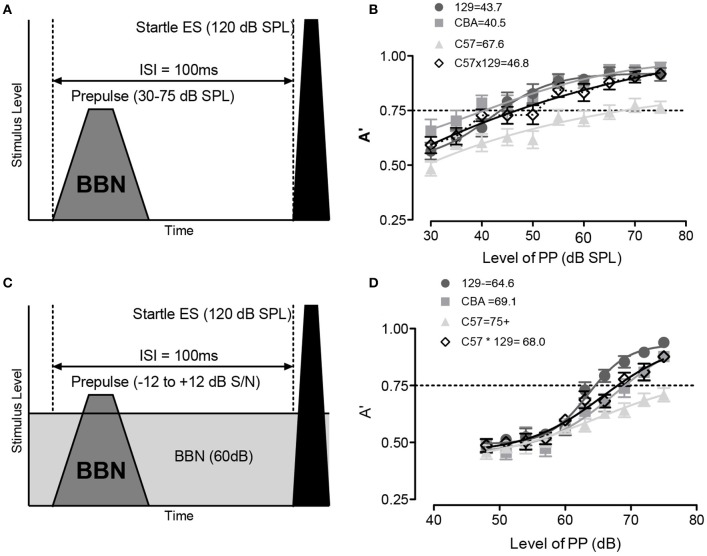Figure 3.
When brief prepulses are detected in quiet and masking noise, they can be used to inhibit the ASR [i.e., prepulse inhibition (PPI)]. PPI can be used then to assess the mouse's ability to detect prepulse signals presented in quiet or embedded in masking noise. (A) Schematic of prepulse and acoustic startle stimulus. The prepulse was a broad band noise 2–100 kHz (BBN), the acoustic startle stimulus was always a BBN delivered at 120 dB. (B) Detection of the broadband (BBN) prepulse was robust in all strains, and increased with level, with A′ = 0.5 equal to no difference between no prepulse and prepulse (i.e., not detectable), and 50% PPI threshold defined as sound level with A′ = 0.75, and the numbers next to strain labels indicate the prepulse level (dB SPL) at which this is reached. C57 mice were unusual in having a low asymptotic A′ to PPI compared to the other strains. (C) Schematic of prepulse and startle stimulus in background masking noise (2–100 kHz@ 60 dB). (D) Detection of the broadband prepulse against the masking noise was again robust in all strains. Error bars are SEMs.

